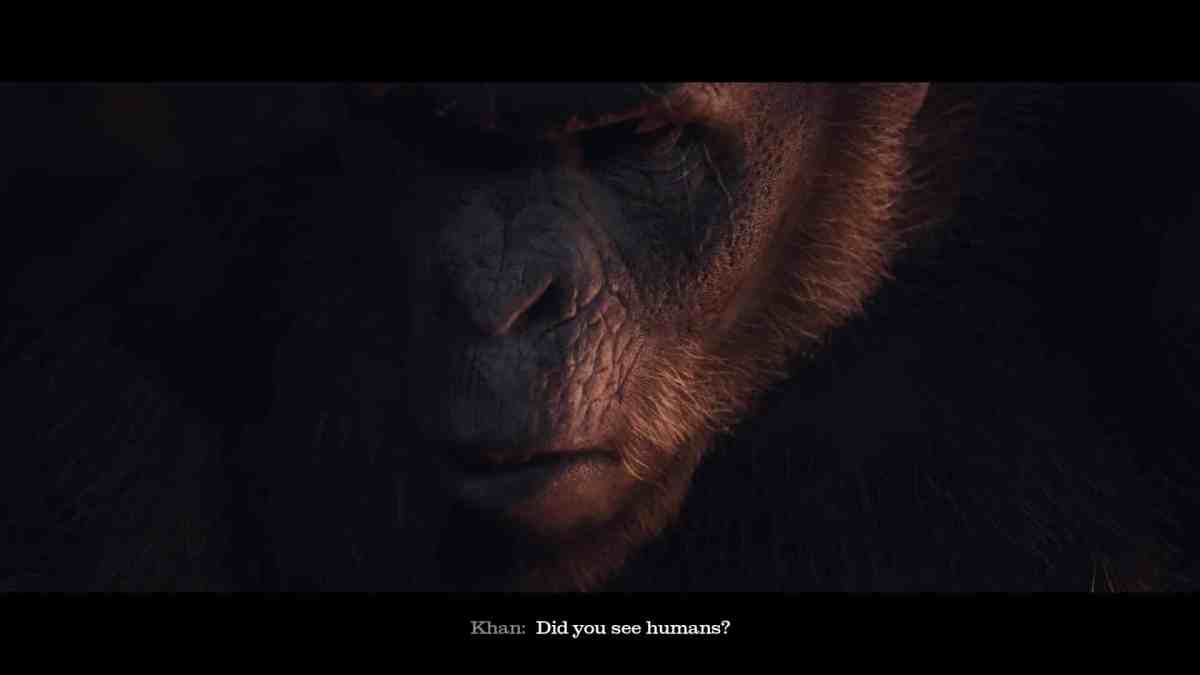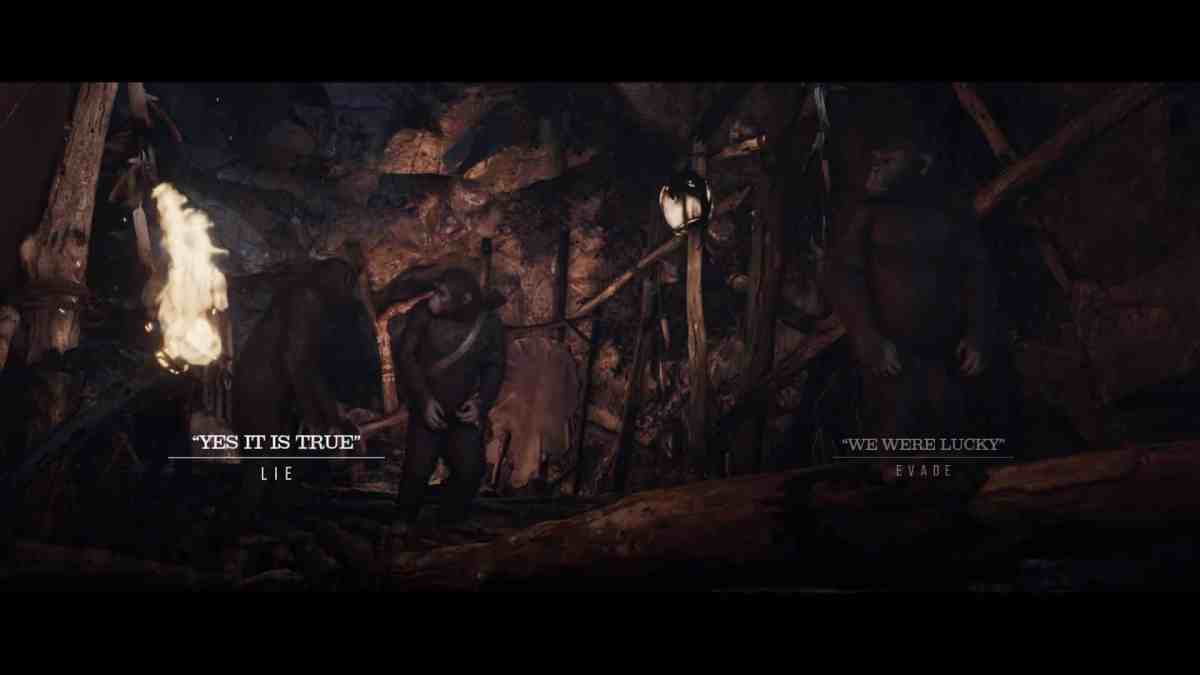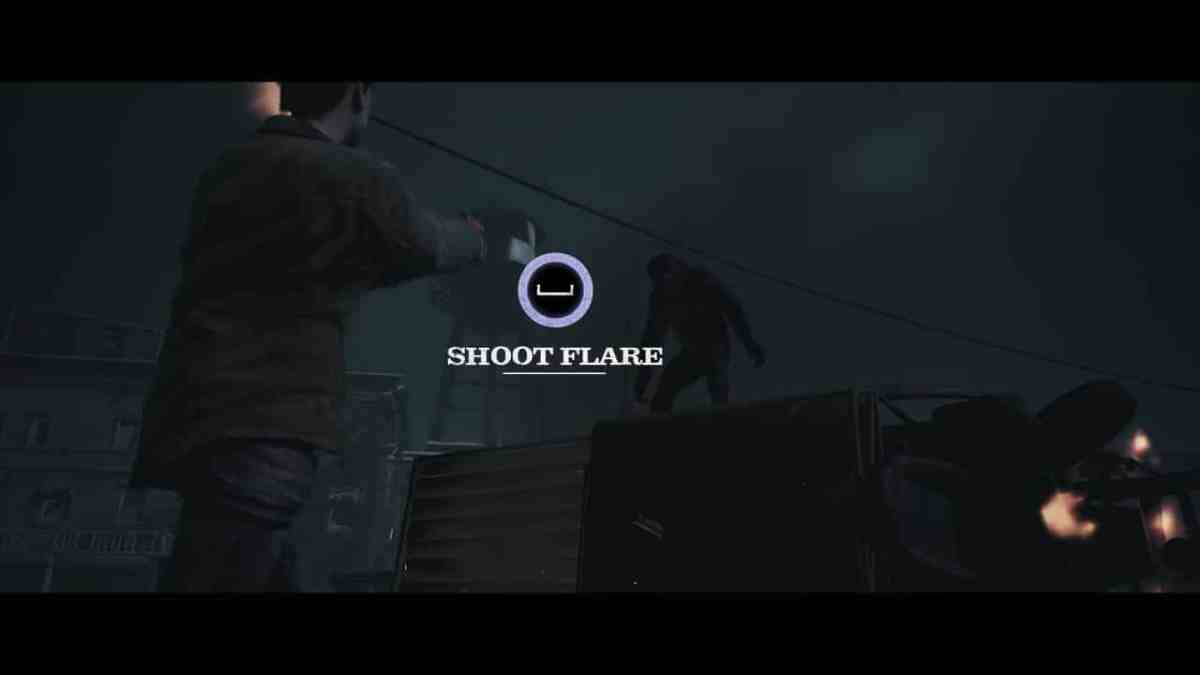It’s surreal that Planet of the Apes has steadily claimed one of the best batting averages of any modern sci-fi series. Every entry in the latest series has only improved in quality and acclaim, yet Apes has never quite cracked how to translate itself into a fun game. That is — until Andy Serkis, Apes series star and mo-cap evangelist, teamed up with developer Imaginati to find the missing link between movies and adventure games with Planet of the Apes: Last Frontier.
Set between Dawn and War for the Planet of the Apes, Last Frontier is a Wild West tale of leadership, manipulation, and cultural divides. You’re thrust into positions of power as both the tenuous new leader of a human camp and the second in line for the throne of the ape tribe. No matter whom you stand with, you’re faced with tough choices as you struggle to ensure your people survive. Failure isn’t a game over, but instead being left with nothing but the ashes and echoes of your mistakes.
That’s the deciding factor on whether you’ll enjoy Last Frontier or not. If you love the Westerns, branching narrative, and stories of finding common ground, then Last Frontier has something to offer you. It feels like a big-budget Telltale game, evolving things further so that quick-time events actually have a meaningful impact depending on your approach. If you can dig that, it’s an amazing time.

Like Supermassive’s Until Dawn, the depth and tension come from your choices being permanent, with unforeseen consequences looming on the horizon. Putting you in the middle of a small-scale conflict, Last Frontier brushes aside Caesar’s revolution in the films for an intimate affair born out of desperation. The survivalist Jess just wants to keep her son and town safe from raiders, both human and ape alike. Bryn is the middle child of his tribe’s leader and is caught between the machinations of his bloodthirsty brother and contemplative father as he tries to keep his family fed. Neither actually wants to go to war, but unless you’re careful, war is what you’ll get.
That uncertainty instills a sense of tension just as strong as zombies lurking around a corner or a towering boss fight. At any given moment, you might swap from Bryn to Jess in the same battle or tense negotiation, all rolling together smoothly. One moment you’re debating whether to kill a human lookout to aid an ape raid led by your arrogant brother, the next you’re consoling your grieving son while on watch duty. This does do wonders for Last Frontier’s presentation, capturing gorgeous camera shots backed by a perfectly timed score. There’s no awkward pretense where the game rips controls out of your hand, instead embracing its filmic nature beautifully.
Even as someone who hasn’t always been keen on games like Uncharted for desperately chasing after the air of “cinema,” I believe Last Frontier makes a good case for itself. They could’ve easily made this game into an open-world sandbox with a checklist of things to do as both a human and an ape, but I don’t think that would’ve deepened the experience. Instead, Last Frontier is tightly focused on the moments that matter, making sure every turn lands with a tangible impact.

Not every choice matters in the end, but with each playthrough taking roughly two and a half hours, most of them alter something. The game’s assortment of trophies highlight this wonderfully, with a variety of outcomes to several subplots on top of the main narrative. The endings are distinctly meaningful as well, nailing Last Frontier’s themes of hatred and forgiveness.
That laser focus also results in solid direction, especially in each character’s body language to give you a read of the situation. The apes only rarely speak aloud, often using sign language and simian grunts with subtitles. What should lead to half the game being a tedious test of judging gestures instead effectively communicates just as much nuance in both groups to marvelous effect. Backed by a haunting score and beautiful aesthetics, Last Frontier can be awe-inspiring in certain shots. That is — when the engine is actually running properly.
Despite playing Last Frontier on PlayStation 4, which it released for as a year-long exclusive, there’s a mess of optimization issues. We’re talking more than one instance of pop-in happening mid-scene, culling and re-rendering assets like it’s a frantic high school talent show performance. Level transitions can cause loading hitches, the camera struggling to catch up to the location it’s supposed to be loading. You’ll watch details re-fade in on character models you just saw seconds ago. Then the next scene is spotless and without issue, leaving one to suspect the game needed a few more months in the oven.

When it isn’t hitched up by errors, Last Frontier is a gorgeous sight to behold. Were it not for the technical oversights, my only real criticism would be that the sound design is pretty weak outside of the voice overs and soundtrack. It’s most notable when a random object just moves or breaks without a sound when you know that metal door should creak. This isn’t nearly as persistent or distracting as the rendering issues, but it’s a missed opportunity to strengthen presentation.
Regardless, I did enjoy my time with Planet of the Apes: Last Frontier. It’s an approach I could see other franchises taking in the future. Last Frontier is a game anyone can play, presenting a solid sidestory to the main conflict in the current Planet of the Apes franchise. It’s also an accessible entry point to the series, where even someone relatively new to the franchise gets the jist of things fairly quickly. Its timely themes suit the series perfectly, and while your time among both groups is brief, Jess and Bryn make an impactful presence. It’s not a massive leap forward, but Planet of the Apes: Last Frontier is more than a footnote in the evolution of adventure games.
